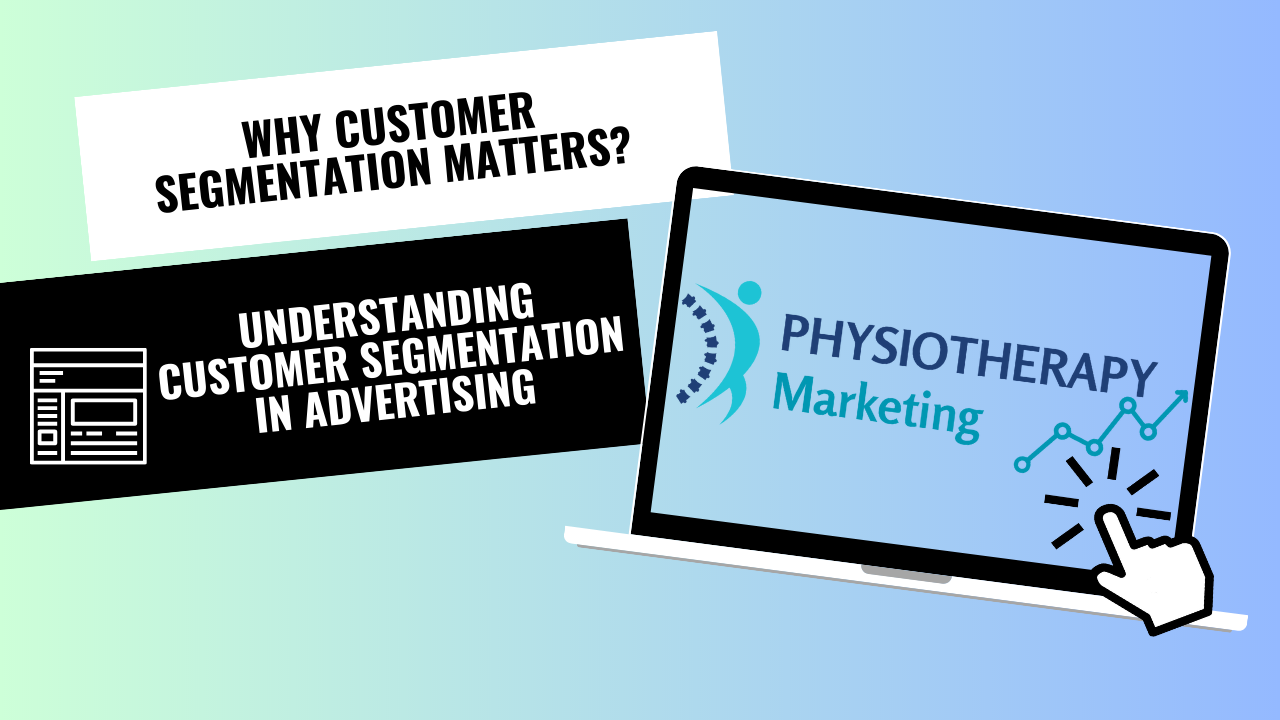
Introduction:
In the dynamic landscape of today's business world, understanding your customer segmentation is paramount to success. Customer segmentation is a powerful tool that can help businesses gain a deeper insight into their customer base, tailor their marketing efforts, and ultimately drive growth. In this blog post, we will delve into the significance of customer segmentation, its benefits, and how you can implement it to enhance your business strategies.
Customer segmentation categorizes your customer base into groups based on shared characteristics or behaviors. These characteristics can include demographics, psychographics, purchasing behavior, and more. The goal is to create meaningful and actionable segments that enable businesses to personalize their marketing strategies and offerings.
Types of Customer Segmentation
There are various ways to segment your target audience, each providing valuable insights into consumer behavior. Let's explore some of the most common types of customer segmentation:
Demographic Segmentation :
Demographic segmentation divides your audience based on demographic factors such as age, gender, income, education, marital status, and occupation. This type of segmentation is foundational and helps you understand the essential attributes of your customers. For example, a luxury fashion brand may target affluent women aged 25-40.
Psychographic Segmentation:
Psychographic segmentation delves into the psychological aspects of your audience, including their values, interests, lifestyles, opinions, and beliefs. By comprehending psychographics, you can develop marketing campaigns that emotionally appeal to your target audience. For instance, a travel agency may target adventurous travelers who value experiences over luxury.
Geographic Segmentation:
Using geographic segmentation, you can divide your audience into various groups according to where each person lives. Different regions have distinct preferences and cultural nuances, and tailoring your messaging to specific areas can improve campaign effectiveness. For example, a beverage company may customise its marketing for different climates or cultural events.
Behavioral Segmentation:
Behavioral segmentation categorizes customers based on their past behaviors and interactions with your brand. This includes purchase history, website visits, engagement with marketing campaigns, and brand loyalty. You can predict future actions and design targeted campaigns by analyzing behavior patterns. For instance, an e-commerce platform may offer discounts to incentivize customers who have abandoned shopping carts.
Technographic Segmentation:
Technographic segmentation classifies customers based on their preferred technology and digital behavior. Understanding your audience's tech preferences is crucial for delivering personalized digital experiences in the digital age. For example, a software company may target businesses that use specific operating systems or rely heavily on mobile devices.
The Benefits of Customer Segmentation
Customer segmentation offers many advantages for businesses investing time and resources into this strategic approach. Let's examine a few of the main advantages:
Enhanced Personalization:
One of the primary reasons why customer segmentation matters is its ability to enhance personalization. When you understand your customers' preferences, needs, and pain points, you can tailor your marketing messages and product offerings to resonate with each segment. This personal touch can significantly increase customer engagement and loyalty.
By dividing your customer base into segments, you can create targeted marketing campaigns that speak directly to each group's unique interests. For example, an e-commerce store can send personalized product recommendations based on a customer's purchases and browsing history. This level of personalization can result in higher conversion rates and increased revenue.
Improved Customer Retention:
Customer retention is crucial for long-term business success. Customer segmentation allows you to identify high-value customers more likely to stay loyal to your brand. By understanding their preferences and needs, you can create loyalty programs, exclusive offers, and personalized communication to keep them engaged.
Moreover, by identifying at-risk customers within your segments, you can proactively address their concerns and provide solutions to prevent churn. This proactive approach can save your business valuable customers who might otherwise have switched to a competitor.
Efficient Resource Allocation:
Every marketing campaign requires resources, including time and money. Customer segmentation helps you allocate these resources more efficiently. Instead of using a one-size-fits-all approach, you can focus on the segments offering the highest ROI. This targeted approach can lead to cost savings and a more significant impact on your bottom line.
For instance, if you discover that a specific customer segment is highly responsive to email marketing but less interested in social media ads, you can allocate more of your marketing budget to email campaigns and reduce spending on less effective channels.
Implementing Customer Segmentation
In digital marketing, staying ahead of the curve is paramount to success. One of the most potent tools in your SEO arsenal is customer segmentation. In this article, we'll delve into the art of customer segmentation and explore how it can elevate your online presence to new heights.
Customer segmentation is not merely a buzzword but a strategic approach that can revolutionize your SEO efforts. It involves categorizing your target audience into groups based on shared characteristics, behaviors, and preferences. These groups, or segments, can be found on various factors, including demographics, geography, interests, and buying patterns.
Data Collection and Analysis:
The first step is to gather relevant data about your customers. This can include demographic information, purchase history, website behavior, and customer feedback. Once you have collected this data, use analytics tools to identify patterns and similarities among your customers.
The initial phase involves the acquisition of pertinent information regarding your clientele. This encompasses demographic details, buying records, online interactions, and customer input. After accumulating this information, employ analytical instruments to pinpoint trends and commonalities within your customer base.
Commence by amassing pertinent data concerning your customer base. This data may encompass demographics, past purchase records, online interactions, and customer input. Once this data is compiled, leverage analytic tools to discern patterns and resemblances among your customers.
Define Your Segments:
Based on your data analysis, create clear and meaningful customer segments. These segments should be actionable and distinct from one another. You may, for instance, create segments for "Seasonal Shoppers," "First-Time Buyers," and "Frequent Shoppers."
After thoroughly analyzing your data, crafting precise and valuable customer segments becomes imperative. These segments should possess two crucial attributes: they must be both actionable and easily distinguishable from one another. An illustrative approach would be to categorize your customer base into segments such as "Frequent Shoppers," "First-Time Buyers," and "Seasonal Shoppers." These distinctions enable you to implement targeted strategies that appeal to the particular interests and behaviors of each section.
Once the data analysis is complete, the next step involves the development of clear and well-defined customer segments. These segments should be readily actionable and exhibit distinct characteristics that set them apart. As an example, consider classifying your customer base as "Frequent Shoppers," "First-Time Buyers," and "Seasonal Shoppers." These distinct segments serve as the foundation for tailoring marketing strategies that specifically address the preferences and behaviors of each group, thereby optimizing your overall approach.
Tailored Marketing Strategies:
With your segments defined, develop marketing strategies tailored to each group's preferences and needs. This could involve creating unique content, offering personalized discounts, or adjusting your communication channels.
Once you've clearly defined your customer segments, the next pivotal step is to craft marketing strategies catering to each group's distinct preferences and requirements. These strategies may encompass the creation of specialized content, the provision of personalized discounts, or even the adaptation of your communication channels. In essence, tailoring your marketing initiatives ensures that your efforts resonate more effectively with each segment, enhancing overall engagement and conversion rates.
With your customer segments precisely delineated, it's time to devise custom-tailored marketing tactics to meet each group's unique preferences and needs. This may involve the development of exclusive content, the provision of personalized discounts, or the adjustment of your communication channels to suit the importance of each segment better. By adopting these bespoke approaches, your marketing efforts become more attuned to the specific characteristics of each segment, ultimately leading to increased engagement and improved conversion rates.
Monitor and Refine:
Customer segmentation is not a one-time effort. Continuously monitor the performance of your segments and refine your strategies as needed. Customer preferences can change over time, so staying adaptive is vital to long-term success.
It's important to understand that customer segmentation is not a static endeavor; it requires ongoing attention. Consistently monitor the performance of your segmented strategies and make refinements when necessary. Customer preferences tend to evolve, making adaptability a critical factor for sustained success.
Remember that customer segmentation is not a one-and-done task. It necessitates continual vigilance. Regularly assess the effectiveness of your segmented strategies and be prepared to make adjustments when required. Customer tastes and preferences can change as time progresses, underscoring the importance of remaining flexible to ensure long-term prosperity.
Conclusion
In this conversation, we've explored the intricacies of implementing customer segmentation as a powerful tool within SEO and digital marketing. Customer segmentation offers many benefits, from enhanced personalization and improved targeting to efficient resource allocation and an enriched user experience. It's not merely a one-time effort but an ongoing process that requires constant evaluation and adaptation to changing customer preferences.
By collecting and analyzing data, defining clear customer segments, crafting tailored marketing strategies, and continuously monitoring and refining your approach, you can leverage the full potential of customer segmentation to elevate your online presence and achieve long-term success in the dynamic world of digital marketing. It's a strategic approach that empowers you to connect with your audience deeper and drive meaningful engagement and conversions. So, embrace the power of customer segmentation and watch your SEO strategy flourish in the ever-evolving digital landscape.
